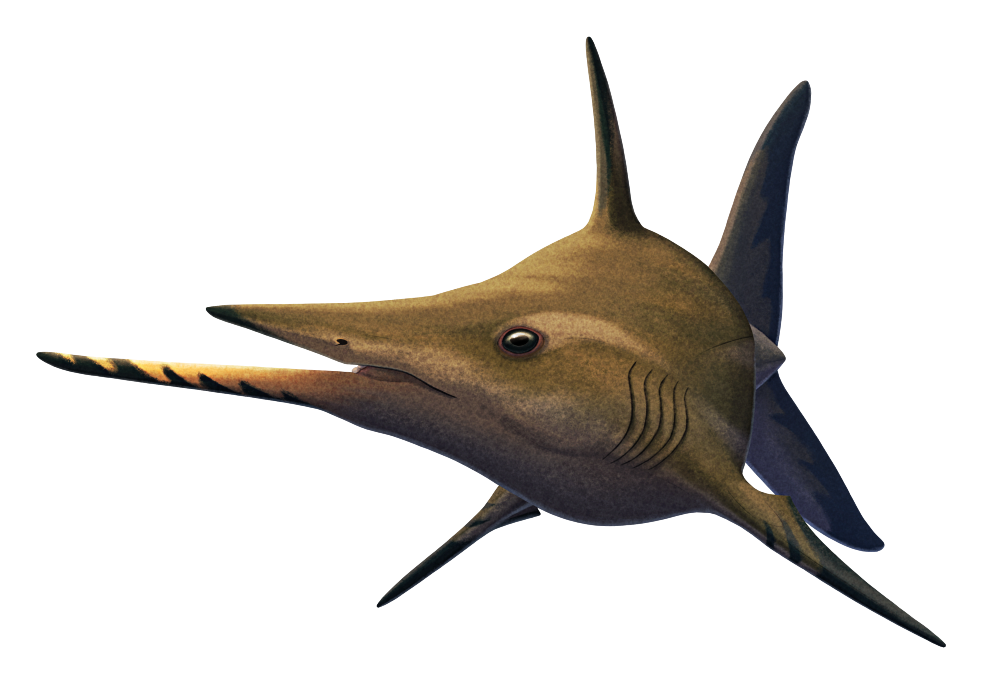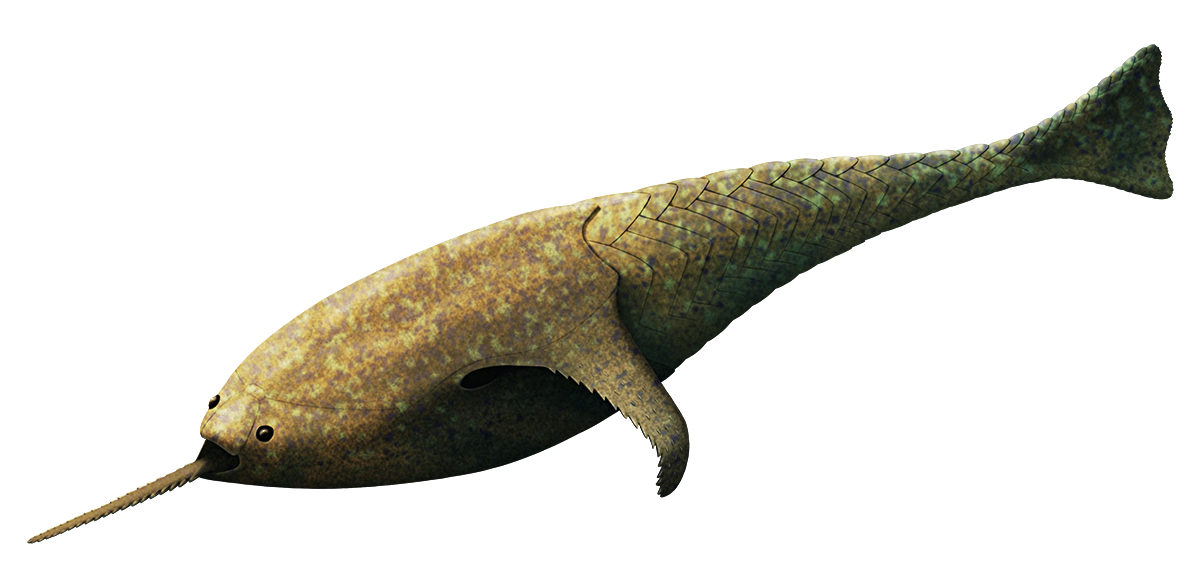The eugeneodonts were a group of cartilaginous fish that convergently resembled sharks but were actually much closer related to modern chimaeras. They had unique “tooth whorls” in their jaws, and the most famous member of the group is probably Helicoprion, whose bizarre buzzsaw-like tooth arrangement was only properly understood within the last decade.
Ornithoprion hertwigi here was one of the first eugeneodonts found with fossilized skull material, and helped with the early understanding of just how their weird jaw anatomy actually worked.
It lived during the Late Carboniferous, about 315-307 million years ago, in a shallow tropical sea that covered what is now southwestern Indiana, USA.
At only around 50cm long (~1’8″) it was one of the smaller eugeneodonts, and along with a small Helicoprion-like tooth whorl it also had a distinctive highly elongated chin. Similar to modern halfbeak fish this structure may have served a sensory function, helping Ornithoprion to detect prey in dark or murky waters.


